Trends in iron deficiency anemia research 2001-2020: A bibliometric analysis
John L Frater
John L Frater, Department of Pathology and Immunology, Washington University, St.Louis, MO 63110, United States
Abstract BACKGROUND Iron deficiency anemia has a worldwide impact on individual health and national and international economies, with an estimated one-third of the world population being iron deficient.AIM To evaluate the iron deficiency literature published between 2001-2020 with an emphasis on: (1) Identification of collaborative research networks most active in this field; (2) Research topics of greatest importance; and (3) Analysis of the mostcited papers published between 2001-2020 and the most cited papers in 5-year intervals during this period to assess for emerging trends in research in this area.METHODS A search of Clarivate Analytics World of Science Core Collection was performed for the topic “iron deficiency anemia”, limited to document type (article or review), language (English), and time span (2001-2020).The following data were extracted from these articles: Year of publication, journal, study design, country of first author, and number of citations.The metadata derived from the search were used to identify publication trends in iron deficiency anemia research and their distribution in countries/regions and institutions.Network visualization by VOSviewer (Leiden University) was performed to identify international collaborative groups and research hotspots.RESULTS The search identified 4828 publications.Three international collaborative networks were identified: United States, Canada, and India; Turkey, China, and Japan; and England and other European countries.Five research areas were hotspots: Epidemiologic aspects of iron deficiency anemia, biochemical aspects of iron deficiency anemia, clinical evaluation of causes of iron deficiency anemia, causes of iron deficiency anemia, and bioavailability of dietary iron.Subset analysis of the top-10 overall cited papers, and the top-10 cited papers for each 5-year increment beginning in 2001 showed that the largest number of highly cited papers were from the field of epidemiology, the smallest number from the field of bioavailability of dietary iron.CONCLUSION The literature on iron deficiency anemia has a high citation rate compared to studies of other topics using similar methodology and is heavily biased toward studies from the United States and epidemiologic studies.
Key Words: Iron deficiency anemia; Bibliometrics; VOSviewer; Trends
INTRODUCTION
Iron deficiency and iron deficiency anemia
Iron deficiency and iron deficiency anemia are health conditions with a worldwide effect on individual health and an impact on national and international economies.An estimated one-third of the world population is affected by iron deficiency, and deficiency of this micronutrient has effects on multiple systems of the body, including the central nervous system and reticuloendothelial systems[1,2].Health consequences of iron deficiency are widespread and include impaired intellectual function and decreased immunity[3,4].
Anemia is a common consequence of iron deficiency.The degree of severity of anemia is variable, and it is microcytic and hypochromic as demonstrated by routine laboratory testing, which identifies a moderate to severe decrease in red blood cell count, hemoglobin, and hematocrit, accompanied by a moderately decreased mean corpuscular volume and moderate to marked elevation of red blood cell distribution width[1].
The bibliometric method as a research tool
Bibliometric methods are useful to evaluate trends in research activities over time[5].Bibliometrics take advantage of literature databasing technology, including literature metrology, and is an increasingly important method of providing insight into research in specific fields.This format has been used to evaluate the impact of articles in many areas of study.It is valuable to identify the most cited studies that have influenced the evolution of a given scientific field[6].
Rationale
In this study, the research trends in the field of iron deficiency anemia in the past 20 years were considered.The aims of this study were to: (1) Identify and analyze scientific publications in this field; and (2) Compare the contribution of this research in different countries and institutions.Bibliometric analysis was performed using the functions of the Web of Science Core Collection and further analysis of the metadata was performed using VOSviewer software (Leiden University).Using the features of VOSviewer, a network visualization of international collaborations and a keywordbased visualization of research fields was performed.This study provides a refined understanding of global trends in iron deficiency anemia research.
MATERIALS AND METHODS
This bibliometric analysis was conducted using the Preferred Reporting Items for Systematic Reviews and Meta-analysis (PRISMA) principles (see PRISMA 2009 checklist statement for PRISMA checklist) according to a methodology similar to that described in earlier studies[6-10], which is detailed below.
Data collection and bibliometric analysis
All articles were searched using the Clarivate Analytics World of Science Core Collection (WOSCC) on August 30, 2020.The study used publicly available data, and thus ethical approval was not required.The search criteria were topic (“iron deficiency anemia”), limited to document type (article or review), language (English), and time span (2001-2020).A topic search includes a search of the following fields: The title of the article or review; the abstract, the keywords; and the keywords plus©, which is a proprietary algorithm using expanded terms from an article’s cited references or bibliography.The following data were extracted from these articles: Year of publication, journal, study design, country of first author, and number of citations.The metadata derived from the search were used to identify publication trends in iron deficiency anemia research and their distribution in countries/regions and institutions.This protocol has not been registered.
VOSviewer bibliometric software (Van Eck and Waltman, Leiden University, Leiden, The Netherlands) was used to perform data mining, mapping, and clustering of the retrieved articles[11].Keywords and countries were labeled with colored circles, the size of which correlated with the occurrence of the keyword or countries in the title and abstract.
Subset analysis of abstracts/full-text
Because of the large number of search results, the title, abstract and full text of the top 200 cited articles were reviewed for appropriateness to the topic.The entire list of retrieved articles was analyzed, and an additional subset analysis of the articles grouped by publication in 5-year increments (2001-2005; 2006-2010; 2011-2015; 2016-2020) was performed.The top 25 keywords identified in the title and abstract of each publication in each time interval was compiled[12].In addition, the top 10 articles published in each time interval was identified, along with their number of citations.
RESULTS
The search returned 4828 references.Review of the titles, abstracts, and full texts of the top 200 cited papers in this group was performed to assess the quality of the search, and all papers in this group were appropriate to the topic of iron deficiency anemia.
These publications had an h-index of 137 with an average of 25.42 citationsperitem.The number of papers publishedperyear in this study has varied from 124 to 402.The year with the largest number of papers published in this study was 2019.The rate of publication of papers in this study has varied from 2.568% to 8.326% (Figure 1).
Of 4163 papers were classified as articles, 695 as reviews.4569 papers (94.6% of the total) were published in English.Based on WOSCC metadata, the papers were published in 97 different research areas, of which the most common were nutrition and dietetics (n= 672, 13.919% of total), gastroenterology (n= 610, 12.635%), hematology (n= 570, 11.806%), pediatrics (n= 566, 11.723%), and general internal medicine (n= 522, 10.812%).
Country of publication
In total, publications were contributed by 157 countries, with the top ten publishing countries listed in Figure 2.
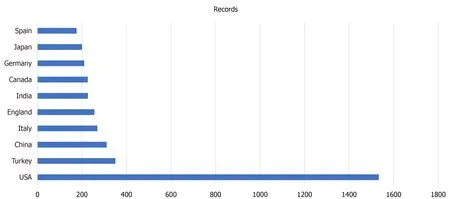
Figure 2 Number of records (n) per country for the top 10 countries contributing papers to this study.
The United States has contributed the largest number of the papers.Other nations in the top 5 countries of publication were Turkey, China, Italy, and England.The authors in this study represented 4840 institutions.The institutions contributing the most papers to this study were the University of California system (n= 179 records) and Harvard University (n= 126 records).2411 funding agencies were listed in these publications, of which the largest number of studies were funded by the United States Department of Health and Human Services (n= 448), the National Institutes of Health (United States,n= 431), and the National Natural Science Foundation of China (n= 119).
Collaborations
The collaboration network analysis is illustrated in Figure 3 and includes countries contributing at least 10 papers.Using this criterion, 64 countries are included in the analysis.There are 3 nodes identified using international collaboration data.The largest, illustrated in red, includes the United States, Canada, and India as the largest contributors.The second, illustrated in blue, includes Turkey, China, and Japan as the most prominent contributing members.The third, illustrated in green, includes England and many European countries.
Journals
The papers in this study were published by 1365 journals.659 journals published ≥ 1 paper; the remaining journals published 1 paper apiece.The top 15 journals, with the number of articles published and the journal’s impact factor (IF), drawn from the 2020 Journal Citation Reports of Clarivate Analytics) are shown in Table 1.The IF for the journals in this group ranged from 17.543 (Blood) to 1.016 (Journal of Pediatric Hematology Oncology).The largest number of papers were published byJournal of Nutrition(n= 107),PLOS One(n= 81), andWorld Journal of Gastroenterology(n= 76).
Co-occurrence of keywords
Overall, 123 terms appeared 50 times or more in the titles or abstracts of the papers in this study (Figure 4).For example, “iron deficiency anemia” appeared 1533 times, “anemia” appeared 1252 times, “children” appeared 726 times, “iron deficiency” appeared 627 times, and “prevalence” appeared 608 times.Based on the VOSviewer keyword mapping, the terms or phrases associated with iron deficiency anemia were divided into 5 clusters, represented by 5 colors (red, green, blue, yellow, and purple).From the results of co-occurrences, current iron deficiency anemia research was shown to be mainly focused on 5 major areas.These are: (1) Epidemiologic aspects of iron deficiency anemia (red); (2) Bioavailability of dietary iron (purple); (3) Clinical evaluation of causes of iron deficiency anemia (blue); (4) Causes of iron deficiency anemia (yellow); and (5) Biochemical aspects of iron deficiency anemia (green).These 5 topics may thus be regarded as the research hotspots in the field of iron deficiency anemia between 2001-2020.
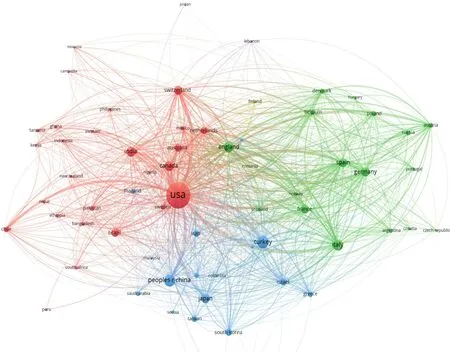
Figure 3 Collaboration network analysis of the 64 countries contributing ≥ 10 papers.
A subset analysis of the top 25 author-selected keywords of each 5-year interval between 2001-2020 and coded to the 5 areas presented in Figure 4 is presented in Table 2[12].The distribution of keywords was relatively unchanged over the years.The largest number of keywords mapped to the epidemiologic aspects of iron deficiency anemia (red) cluster (11-12 keywords in each interval), with smaller numbers of keywords mapping to the other clusters.
Top 10 cited papers
The top 10 cited papers published for the entire period 2001-2020, and the top 10 cited papers published in each 5-year interval are listed in Table 3.The total number of citationsperpaper for the top 10 cited papers published from 2001-2020 ranged from 752 to 4084.
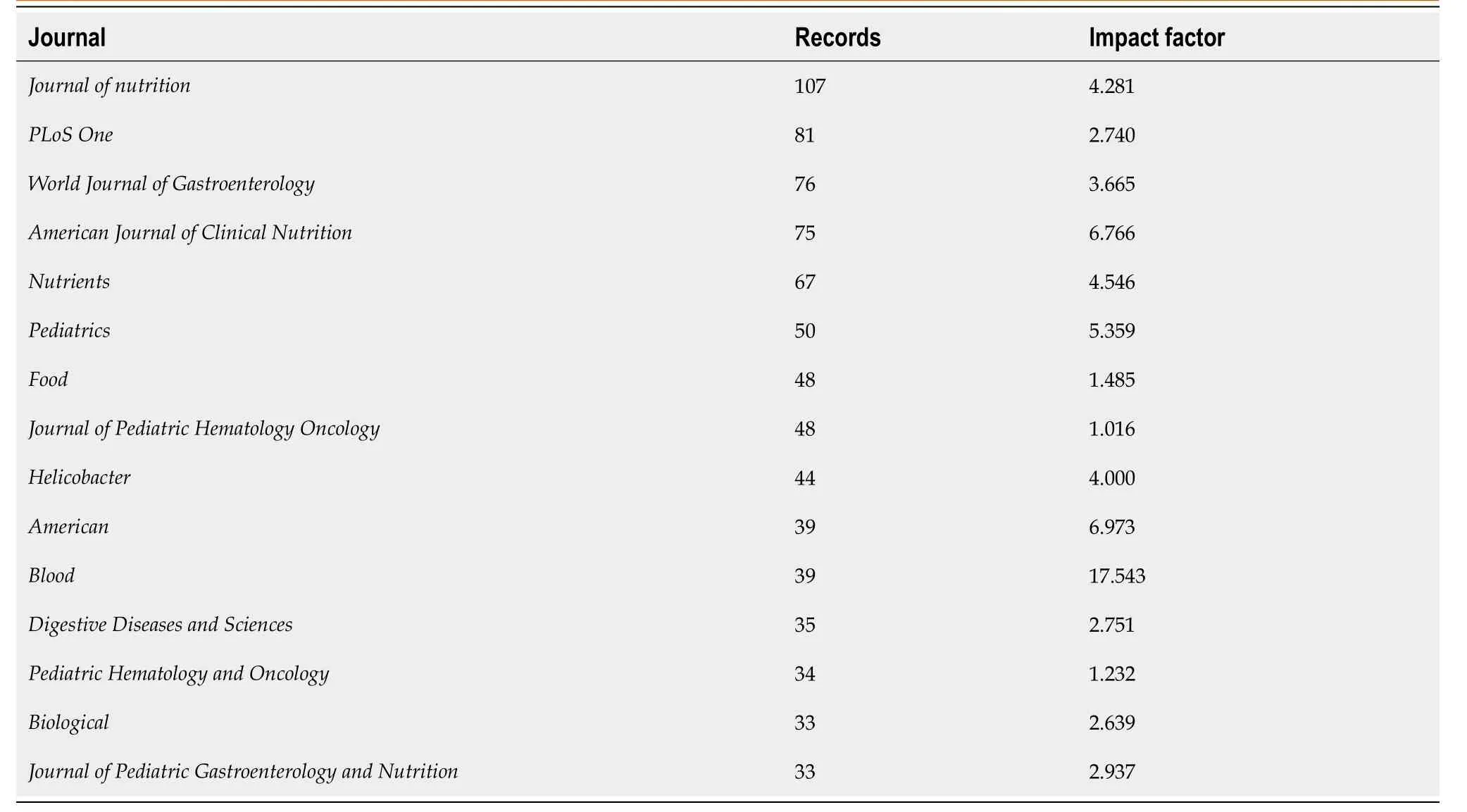
Table 1 Top 15 journals ranked by number of papers published, and corresponding impact factors
DISCUSSION
This bibliometric analysis was performed to evaluate the research trends in the field of iron deficiency anemia between 2001-2020.The purpose of this study was: (1) To identify and analyze scientific publications in this field; and (2) To compare the contribution of this research in different countries and institutions.The main findings were (1) That the most common topic areas were nutrition and dietetics, gastroenterology, hematology, pediatrics, and general internal medicine; (2) United States-based researchers contributed to the vast majority of papers, although researchers from Turkey, China, Italy, and England also made significant contributions to the literature; (3) Keyword analysis revealed that 5 research areas have developed as current hotspots: Epidemiologic aspects of iron deficiency anemia, biochemical aspects of iron deficiency anemia, clinical evaluation of causes of iron deficiency anemia, causes of iron deficiency anemia, and bioavailability of dietary iron; and (4) Evaluation of the top keywords in 5 year intervals showed that the relative contributions of each research area to the total number of papers has remained static, with the largest contribution to the area of epidemiologic aspects of iron deficiency anemia.The citation rate of the top cited papers in this study is high compared to studies on other research areas using similar methodology[13].
Epidemiologic aspects of iron deficiency anemia
The topic of iron deficiency anemia has been the subject of numerous epidemiologic studies, including the Global Burden of Disease Study, a large-scale observational epidemiologic survey which was published as a 4-paper series[14-17].This includes the top-cited paper identified in the current study[14].Approximately a third of the world population is iron-deficient[18], though there are clear disparities in the distribution of iron deficiency.Darmonet al[19] established that iron deficiency anemia was more prevalent in individuals from low socioeconomic backgrounds, possibly due to diet quality[19].Guralniket al[20]’s 2005 paper identified that iron deficiency anemia contributes to a high percentage of cases of anemia in the elderly[20].Although at-risk populations are particularly prevalent in the developing world[21], residents of industrialized national are also impacted, as noted by Dubéet al[22].
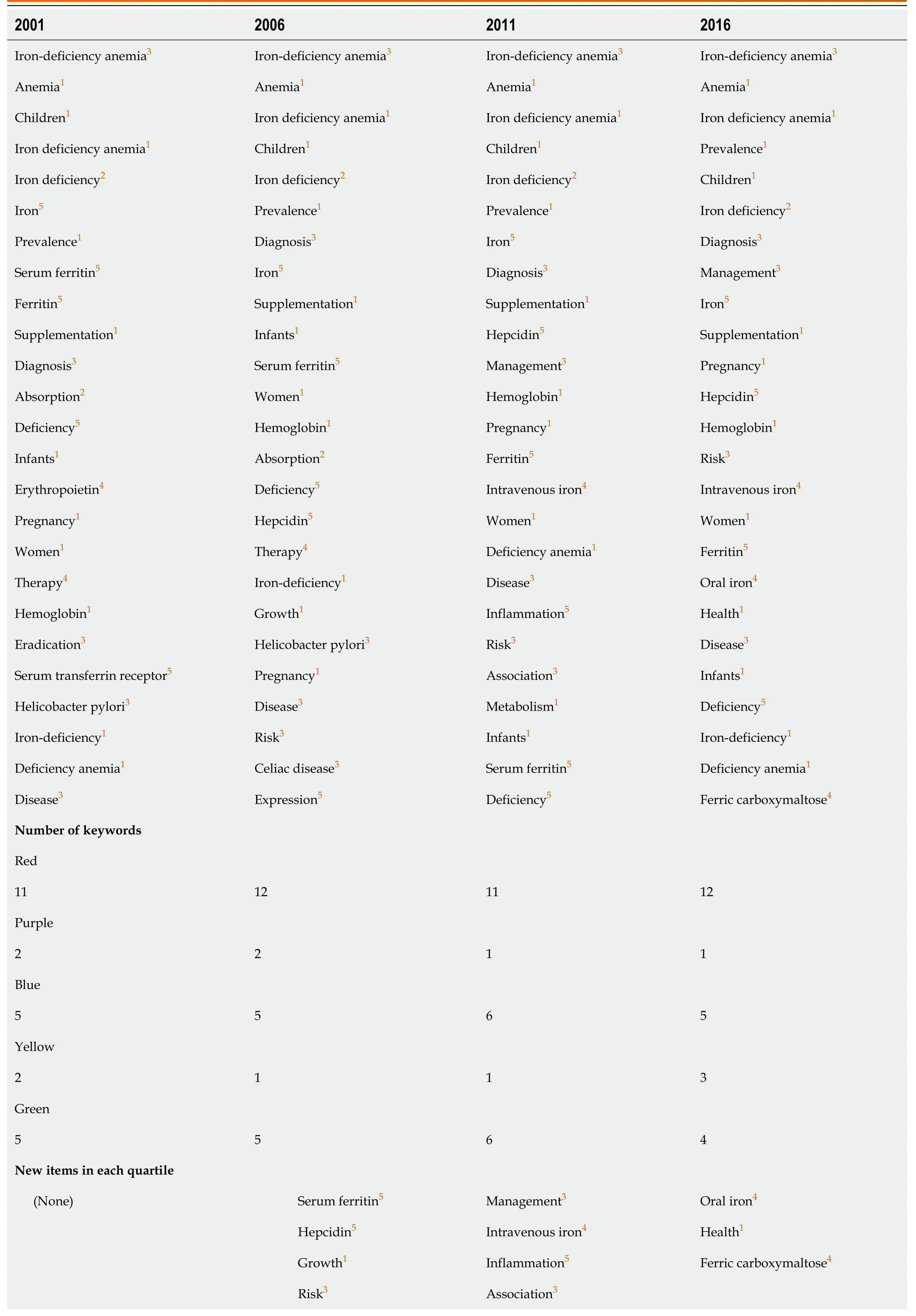
Table 2 Top 25 keywords of each 5-year interval between 2001-2020 color coded to the clusters identified in Figure 4

1Red.2Purple.3Blue.4Yellow.5Green.Summary shows the number of keywords in each 5-year quartile by cluster and a list of the keywords appearing for the first time in the top-25 list for each quartile.
Additional highly cited papers in this study addressed the neurologic implications of iron deficiency and iron deficiency anemia.These include Grantham-McGregoret al[23]’s review of the long-term effects of iron deficiency on neurological functioning in children[23] and Beard and Connor’s seminal paper on iron status and its correlation with neural functioning[24].The work of Lozoff and colleagues, including their 2006 paper which is highlighted in the current study, detailed that the neurological defects in patients in iron-deficient children may extend into adulthood, even after correction of the underlying nutritional issue[25].
An important consequence of iron deficiency and iron deficiency anemia is decreased work output, which may have long-term impact on affected individuals and has an established societal effect.These features were described in highly-cited work by Haas and Brownlie[2].
Bioavailability of dietary iron
Although iron deficiency is a widespread international public health issue, few highimpact studies have been dedicated to the critical issue of iron bioavailability, as evidenced from the survey of top 10-cited papers.Two review papers have discussed features of iron bioavailability.The first, by Plumet al[26], examines the role of zinc in iron metabolism[26].The second, by Xieet al[27], examines the physiologic role of polysaccharides derived from medicinal plants, some of which have been identified as having iron-chelating properties[27].
Biochemical aspects of iron deficiency anemia
Though none of the top-10 cited studies had iron metabolism as a main topic, 4 studies in the quartile analysis were focused on biochemical aspects of iron anemia.Three of these had a particular focus on hepcidin.Hepcidin, a protein produced by the liver and cleared by the kidneys, plays a central role in iron uptake by the duodenum and spleen.Its regulation was described in a highly cited paper identified in this study[28], which showed that hepcidin expression is upregulated in response to anemia and hypoxia and downregulated by increased hematopoiesis.An immunoassay for hepcidin was described by Ganzet al[29] and Girelliet al[30].Laboratory testing for serum hepcidin levels can be used to distinguish iron deficiency anemia from anemia of chronic disease (inflammation)[1].
Another important step in iron metabolism highlighted by the current study is the action of ferroreductase, which acts on ferric (3+) iron-containing molecules in the cytoplasm of phagocytes to produce bioavailable ferrous (2+) iron[31,32].
Causes of iron deficiency anemia
Numerous health conditions have been implicated in the etiology of iron deficiency anemia.Among these are chronic inflammatory conditions, chronic gastritis (in particular gastritis secondary toHelicobacter pylori), chronic use/abuse of non-steroidal anti-inflammatory drugs (NSAID), and celiac disease.Iron deficiency may also follow gastrointestinal procedures such as bariatric surgery and capsule endoscopy[33].The role ofHelicobacter pylorigastritis and celiac disease were the subjects of 2 papers from the overall top 10-cited group[34-36].In addition, Grahamet al[37] identified the mucosal lesions in the gastrointestinal tracts of chronic NSAID users, many of whom developed iron deficiency anemia[37].In patients with chronic kidney disease, decreased renal clearance of hepcidin may result in chronic kidney disease, as described by Levin and Rocco[38].
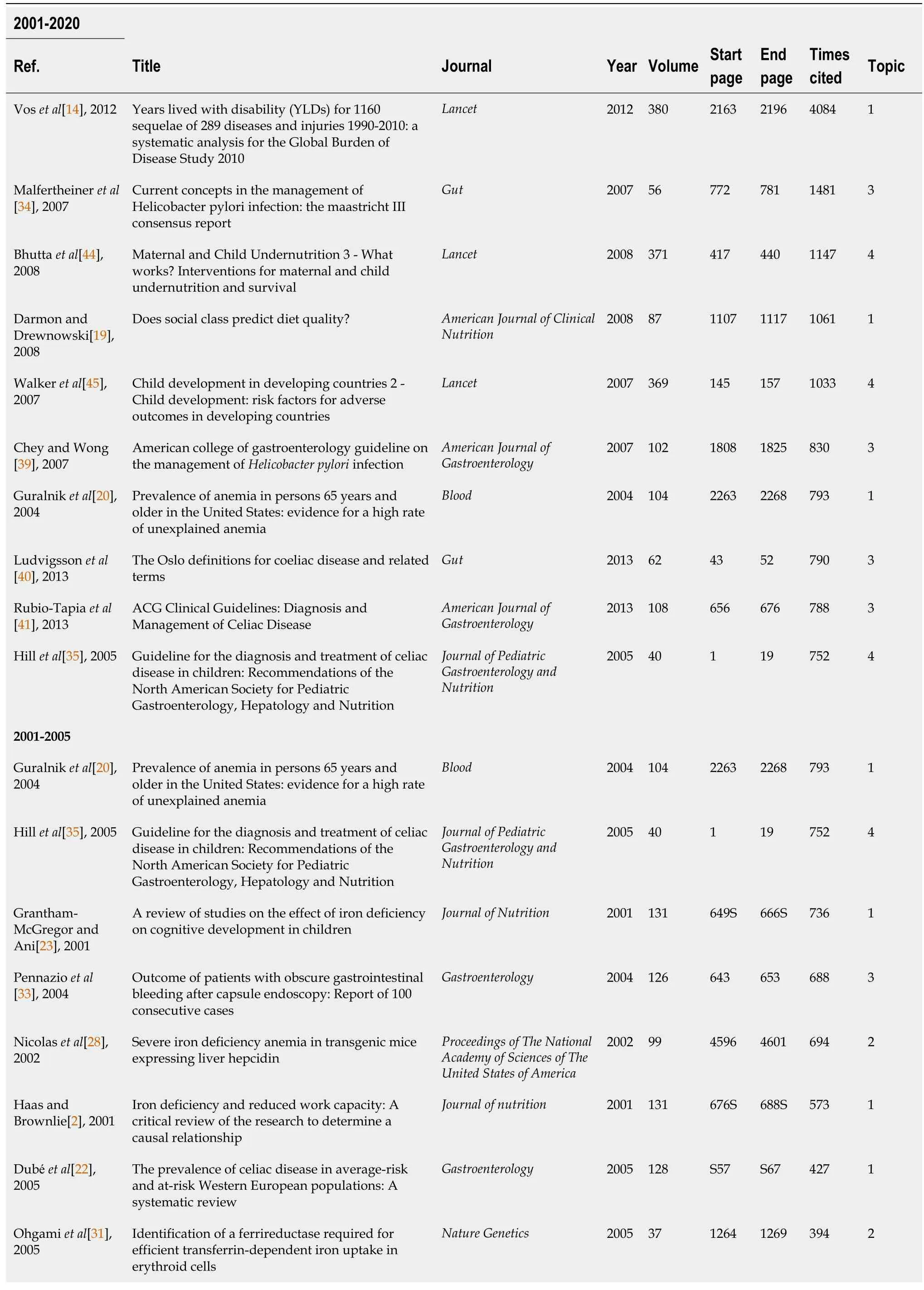
Table 3 The top 10 cited papers published for the entire period 2001-2020, and the top 10 cited papers published in each 5-year interval within the study period
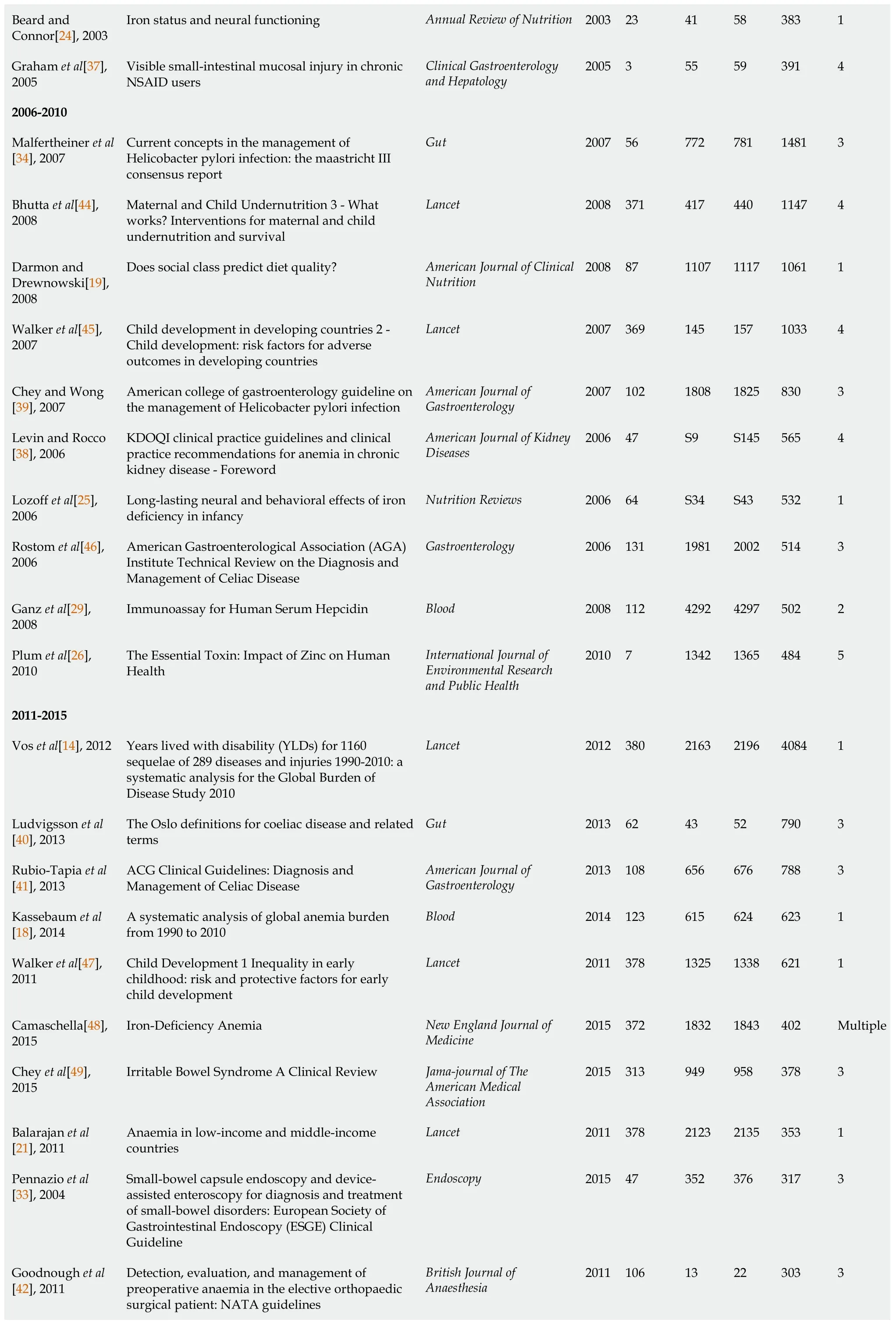
Beard and Connor[24], 2003 Iron status and neural functioning Annual Review of Nutrition 2003 23 41 58 383 1 Graham et al[37], 2005 Visible small-intestinal mucosal injury in chronic NSAID users Clinical Gastroenterology and Hepatology 2005 3 55 59 391 4 2006-2010 Malfertheiner et al[34], 2007 Current concepts in the management of Helicobacter pylori infection: the maastricht III consensus report Gut 2007 56 772 781 1481 3 Bhutta et al[44], 2008 Maternal and Child Undernutrition 3 - What works? Interventions for maternal and child undernutrition and survival Lancet 2008 371 417 440 1147 4 Darmon and Drewnowski[19], 2008 Does social class predict diet quality?American Journal of Clinical Nutrition 2008 87 1107 1117 1061 1 Walker et al[45], 2007 Child development in developing countries 2 - Child development: risk factors for adverse outcomes in developing countries Lancet 2007 369 145 157 1033 4 Chey and Wong[39], 2007 American college of gastroenterology guideline on the management of Helicobacter pylori infection American Journal of Gastroenterology 2007 102 1808 1825 830 3 Levin and Rocco[38], 2006 KDOQI clinical practice guidelines and clinical practice recommendations for anemia in chronic kidney disease - Foreword American Journal of Kidney Diseases 2006 47 S9 S145 565 4 Lozoff et al[25], 2006 Long-lasting neural and behavioral effects of iron deficiency in infancy Nutrition Reviews 2006 64 S34 S43 532 1 Rostom et al[46], 2006 American Gastroenterological Association (AGA) Institute Technical Review on the Diagnosis and Management of Celiac Disease Gastroenterology 2006 131 1981 2002 514 3 Ganz et al[29], 2008 Immunoassay for Human Serum Hepcidin Blood 2008 112 4292 4297 502 2 Plum et al[26], 2010 The Essential Toxin: Impact of Zinc on Human Health International Journal of Environmental Research and Public Health 2010 7 1342 1365 484 5 2011-2015 Vos et al[14], 2012 Years lived with disability (YLDs) for 1160 sequelae of 289 diseases and injuries 1990-2010: a systematic analysis for the Global Burden of Disease Study 2010 Lancet 2012 380 2163 2196 4084 1 Ludvigsson et al[40], 2013 The Oslo definitions for coeliac disease and related terms Gut 2013 62 43 52 790 3 Rubio-Tapia et al[41], 2013 ACG Clinical Guidelines: Diagnosis and Management of Celiac Disease American Journal of Gastroenterology 2013 108 656 676 788 3 Kassebaum et al[18], 2014 A systematic analysis of global anemia burden from 1990 to 2010 Blood 2014 123 615 624 623 1 Walker et al[47], 2011 Child Development 1 Inequality in early childhood: risk and protective factors for early child development Lancet 2011 378 1325 1338 621 1 Camaschella[48], 2015 Iron-Deficiency Anemia New England Journal of Medicine 2015 372 1832 1843 402 Multiple Chey et al[49], 2015 Irritable Bowel Syndrome A Clinical Review Jama-journal of The American Medical Association 2015 313 949 958 378 3 Balarajan et al[21], 2011 Anaemia in low-income and middle-income countries Lancet 2011 378 2123 2135 353 1 Pennazio et al[33], 2004 Small-bowel capsule endoscopy and deviceassisted enteroscopy for diagnosis and treatment of small-bowel disorders: European Society of Gastrointestinal Endoscopy (ESGE) Clinical Guideline Endoscopy 2015 47 352 376 317 3 Goodnough et al[42], 2011 Detection, evaluation, and management of preoperative anaemia in the elective orthopaedic surgical patient: NATA guidelines British Journal of Anaesthesia 2011 106 13 22 303 3
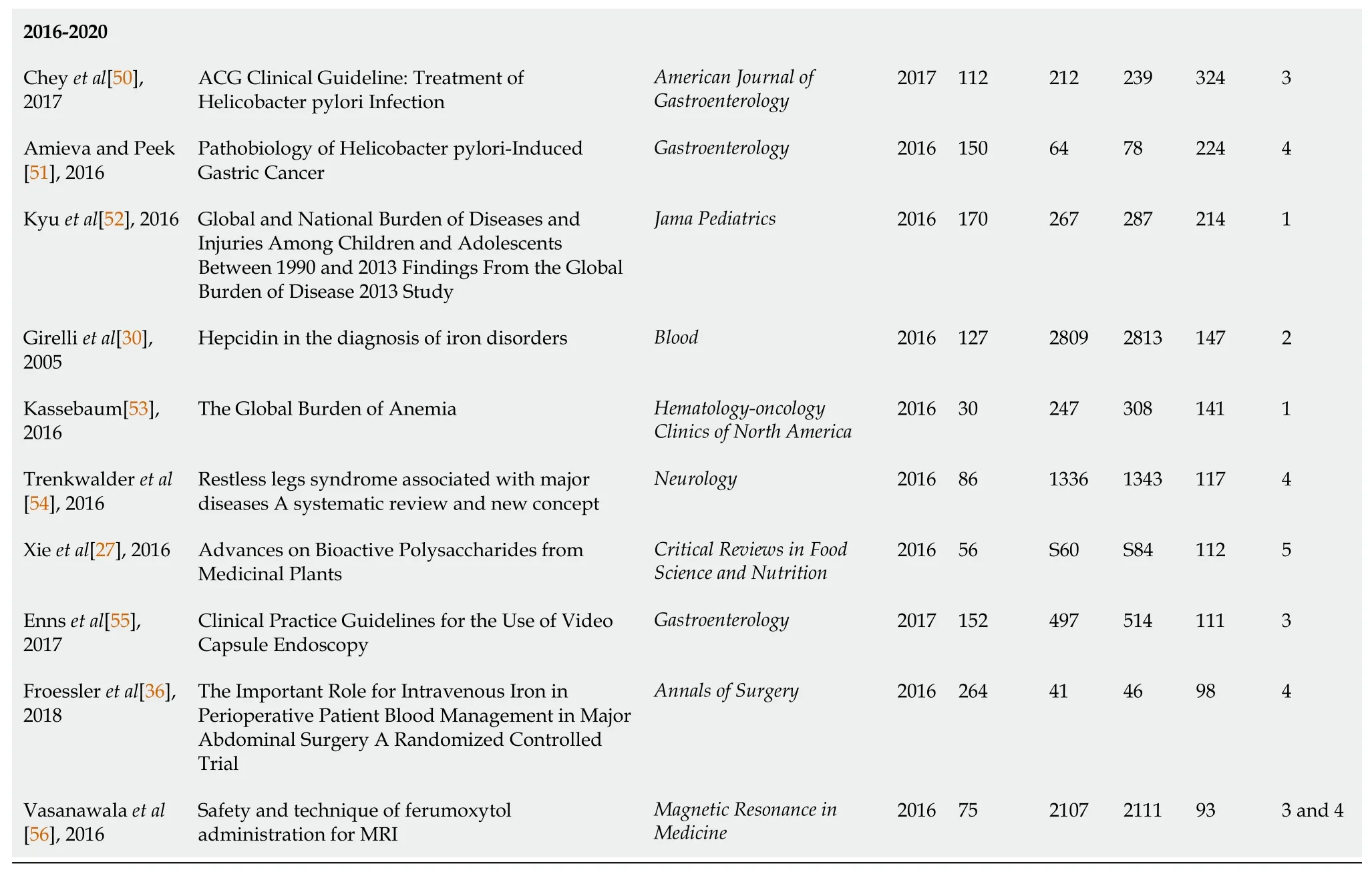
For the Topic column, the following numbers correspond to these topics: (1) Epidemiologic aspects of iron deficiency anemia; (2) Biochemical aspects of iron deficiency anemia; (3) Clinical evaluation of causes of iron deficiency anemia; (4) Causes of iron deficiency anemia; and (5) Bioavailability of dietary iron.
Clinical evaluation and management of causes of iron deficiency anemia
Several of the papers in the current study that detailed the causes of iron deficiency anemia were consensus papers that also recommended protocols for the clinical evaluation of patients.These include the American college of Gastroenterology guidelines and the Maastricht III report, which provided guidance on the management ofHelicobacter pyloriinfection[34,39], and the Oslo and American College of Gastroenterology guidelines for celiac disease[40,41].Presurgical workup of anemias was also a highly-cited topic: An example is the NATA guidelines for the evaluation of anemia in preoperative orthopedic patients[42].The use of perioperative intravenous iron after abdominal surgery has been an important recent contribution to the list of highly-cited papers[36].
Limitations
Bibliometric analysis, although a potent means for highlighting the research hotspots of a given field, has some limitations.First, the bibliometric data are best accessed using the Web of Science database, and currently are not as widely available in other databases.This may cause problems with the search, since checklists for systematic reviews such as PRISMA generally recommend the use of 2 or more databases for searches[43].Another limitation is that since the number of citations of a given paper would be expected to increase over time, it would be expected that older papers would have a higher citation rate than more recently published papers.In the current study, dividing the study period into 5-year quartiles was an attempt to identify papers which had a high citation rate within their cohort.
CONCLUSION
This study was a bibliometric analysis of the medical literature on iron deficiency anemia published over the last 20 years.Five research hotspots were identified; the area of epidemiology had the largest number of highly cited papers, and the area of bioavailability of dietary iron had the lowest.These relative contributions have been apparently unchanged over the course of the study period.Although iron deficiency anemia has a worldwide impact, the published research of this period was highly influenced by studies from the United States.
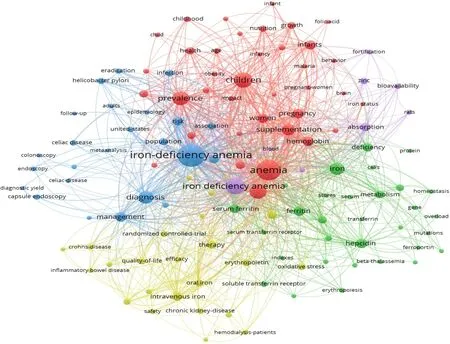
Figure 4 123 terms appearing 50 times or more in the titles or abstracts of the papers in this study.
ARTICLE HIGHLIGHTS
Research background
Iron deficiency is the most common micronutrient deficiency and has a worldwide impact.A bibliometric analysis focused on research trends on the topic of iron deficiency anemia has not been performed.
Research motivation
Analyzing the iron deficiency anemia research published between 2001-2020 what collaborative research networks are most active in this field? What subfields are of greatest importance? Are there any emerging research trends in this area?
Research objectives
The objectives of this study were to evaluate the literature published over the last 2 decades, focusing on: (1) The extent of collaborative research networks in this field; (2)The research topics of greatest prominence; and (3) A subset analysis of the most-cited papers published between 2001-2020 and the most-cited papers in 5-year intervals during this period to assess for emerging trends in research in this area.
Research methods
This study was conducted as a bibliometric analysis using Preferred Reporting Items for Systematic Reviews and Meta-analysis guidelines.A search of the medical literature published between 2001-2020 and related to iron deficiency anemia was performed and data from the search were used to identify publication trends in iron deficiency anemia research.Network visualization by VOSviewer (Leiden University) was performed to identify international collaborative groups and research hotspots in works published during this period.
Research results
Of 4828 publications were included in the study.Network visualization identified 3 international collaborative networks: United States, Canada, and India; Turkey, China, and Japan; and England and other European countries.Five research hotspots were highlighted: (1) Epidemiology of iron deficiency anemia; (2) Biochemistry of iron deficiency anemia; (3) Clinical evaluation of iron deficiency anemia; (4) Causes of iron deficiency anemia; and (5) Bioavailability of iron in the diet.An additional analysis of the top-10 overall cited papers, and the top-10 cited papers for each 5-year increment starting in 2001 showed that the largest number of highly cited papers were from the field of epidemiology, the smallest number from the field of bioavailability of dietary iron.
Research conclusions
Iron deficiency anemia has a high citation rate compared to studies of other topics using similar methodology.Studies from the United States and epidemiologic studies dominate the field.
Research perspectives
Future studies directed from relatively underrepresented areas of the world, and studies directed at less prominently featured areas such as bioavailability of dietary iron may be welcome additions to this already well-developed research area.
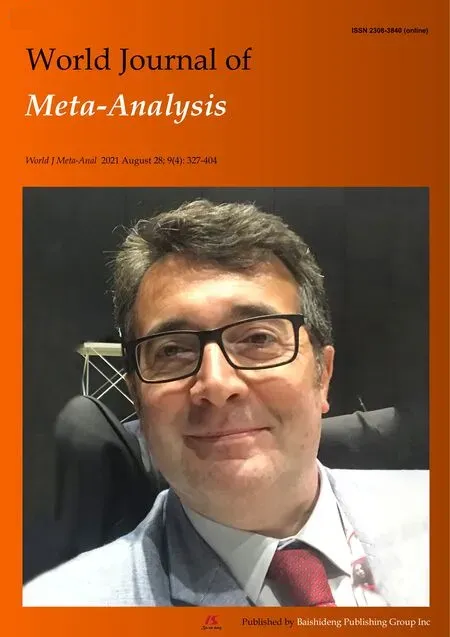 World Journal of Meta-Analysis2021年4期
World Journal of Meta-Analysis2021年4期
- World Journal of Meta-Analysis的其它文章
- Systematic review and Meta-analysis of efficacy and safety of dienogest in treatment of endometriosis
- Systematic review with meta-analysis of the epidemiological evidence in Europe, Israel, America and Australasia on smoking and COVID-19
- Troponin I biomarker as a strong prognostic factor for predicting COVID-19 mortality: A systematic review
- Fate of root shell after pontic/socket shield techniques, is it better to extract the whole tooth?
- Watch and wait in locally advance rectal cancer: Past, present and future
